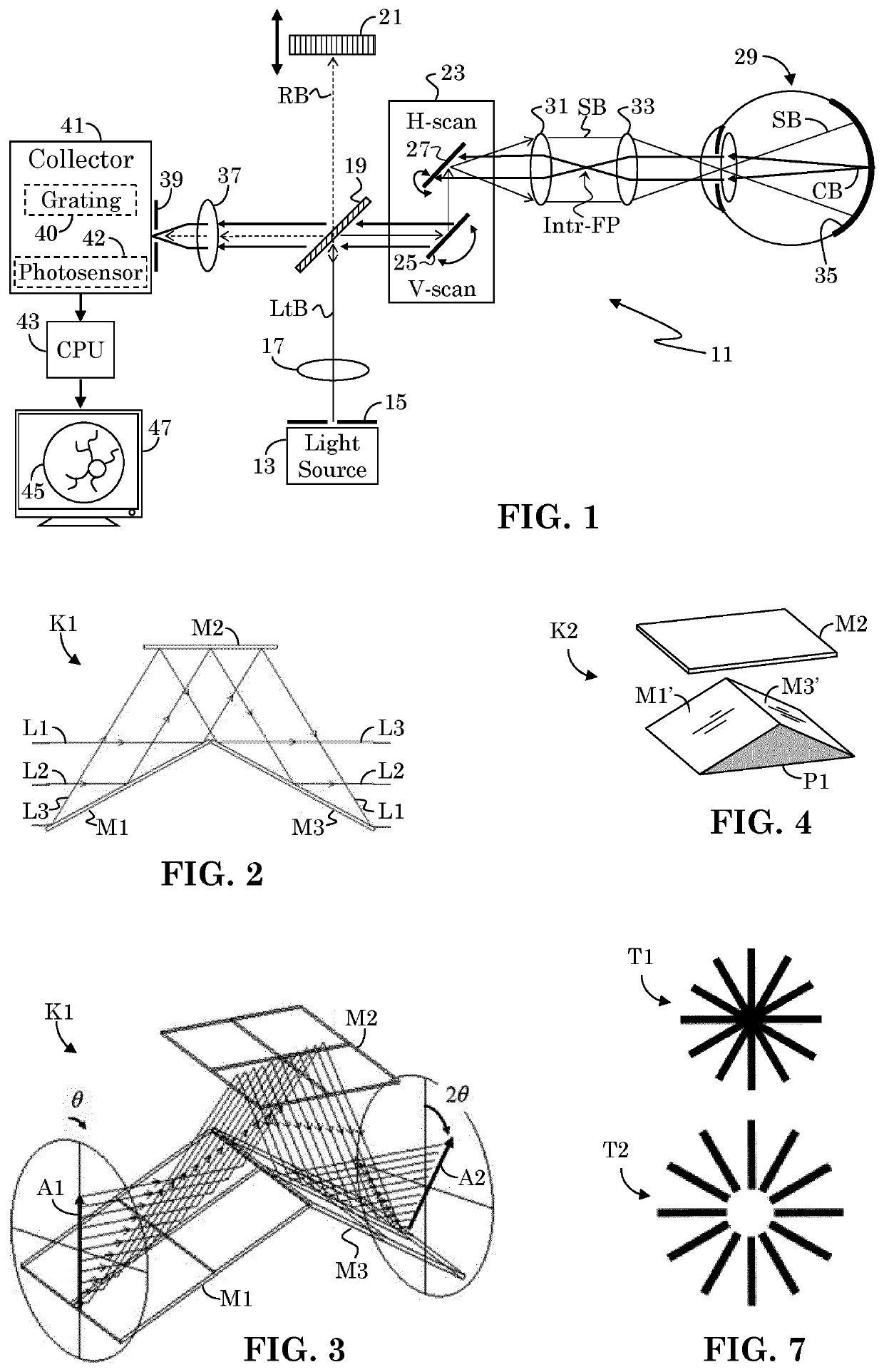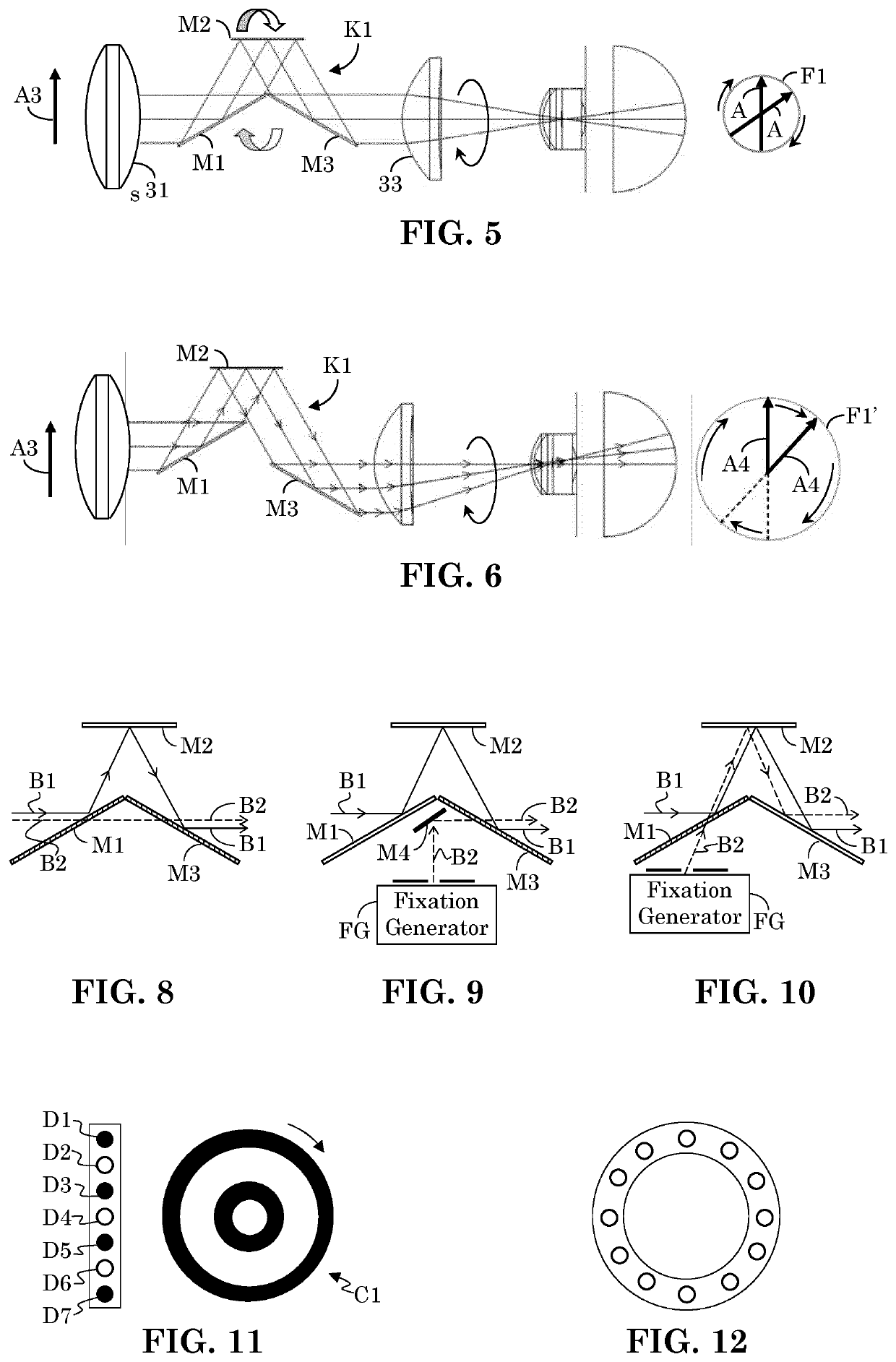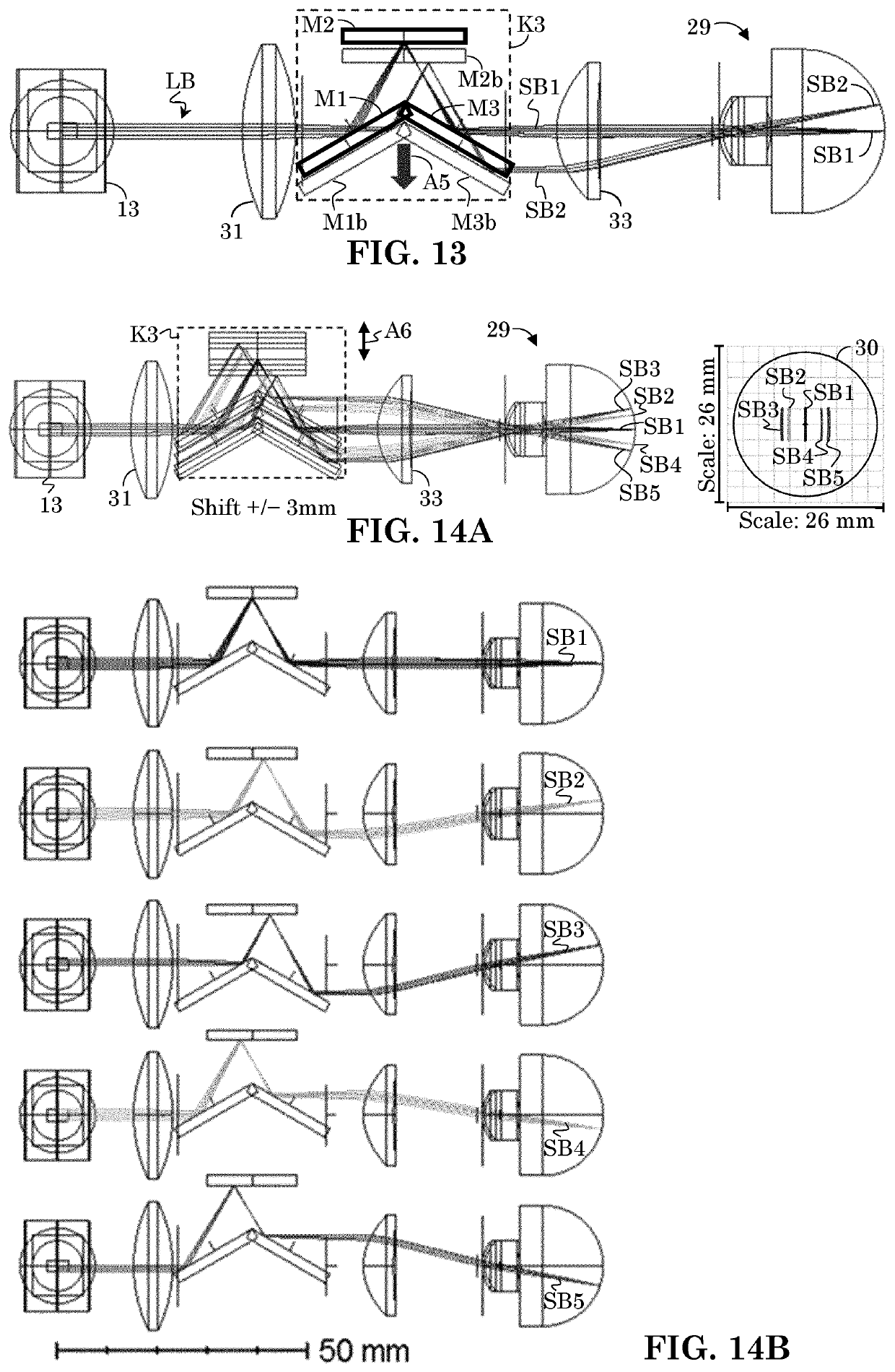Ophthalmic imaging with k-mirror scanning, efficient interferometry, and pupil alignment through spatial frequency analysis
a technology of k-mirror scanning and ophthalmic imaging, applied in the field of ophthalmic imaging systems, can solve the problems of limiting the availability further complexity, and complexity of advanced optical imaging systems, and achieves simplified system-to-patient alignment, simplified rotational and/or, and efficient line-field
- Summary
- Abstract
- Description
- Claims
- Application Information
AI Technical Summary
Benefits of technology
Problems solved by technology
Method used
Image
Examples
Embodiment Construction
[0065]As is discussed more fully below, a fundus imager may provide high resolution grayscale or color images of the eye fundus, whereas optical coherence tomography (OCT) and optical coherence tomography angiography (OCTA) enable noninvasive, depth-resolved (e.g., A-scan), volumetric (e.g., C-scan), and two-dimensional (e.g., en face (frontal plane) or B-scan (transverse plane)) visualization of retinal vasculature. Generally, OCT provides structural images of tissue (e.g., vascular structure) whereas OCTA provides functional images of vasculature (e.g., blood flow). For example, OCTA may image vascular flow by using the motion of blood flow as an intrinsic contrast. For ease of discussion, a brief overview of such devices is presented, as it relates to the present improvements. A more detailed discussion of various types of ophthalmic imaging systems is provided below in section “Fundus Imaging System” and in section “Optical Coherence Tomography (OCT) Imaging System.” Aspects of ...
PUM
 Login to View More
Login to View More Abstract
Description
Claims
Application Information
 Login to View More
Login to View More - R&D
- Intellectual Property
- Life Sciences
- Materials
- Tech Scout
- Unparalleled Data Quality
- Higher Quality Content
- 60% Fewer Hallucinations
Browse by: Latest US Patents, China's latest patents, Technical Efficacy Thesaurus, Application Domain, Technology Topic, Popular Technical Reports.
© 2025 PatSnap. All rights reserved.Legal|Privacy policy|Modern Slavery Act Transparency Statement|Sitemap|About US| Contact US: help@patsnap.com



